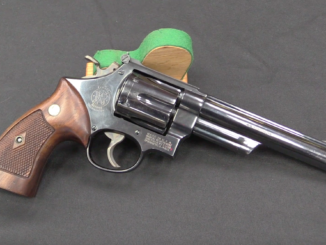Benjamin Joslyn patented this .44 caliber, 5 shot, side-hammer revolver in 1858. He initially contracted with one W.C. Freeman to act as manufacturer and sales agent, but Freeman was unable to actually fulfill the first 500-unit order received from the US military. The contract was cancelled, Joslyn brought manufacturing in-house, and proceeded to make 2500-3000 of the guns to sell on the commercial market. About 1100 of these were purchased by various units of the Federal military, including 225 bought (and formally inspected and marked) by the US Navy – one of few (if not the only) significant purchase of .44 caliber revolvers by the Navy. The guns did see combat at Shiloh and in other battles, but the records available show a generally poor reputation among troops.




https://www.thefirearmblog.com/blog/2016/11/15/worlds-oldest-known-revolver/
“side-hammer”
Interesting asymmetry. Allows good access to cylinder axis.
After quick search I found 2 different revolvers belonging to this category, namely Colt Sidehammer and Allen and Wheelock 1858, see photos:
http://www.littlegun.info/arme%20americaine/artisan%20a/a%20allen%20and%20weellock%201858%20gb.htm
both in “pocket” size.
Did they all used such style of hammer to better appeal to customers accustomed to such hammers [used in single-shot percussion pistols]? What are other advantages and disadvantages of such layout?
In the case of the Colt, actually designed by Elisha K. Root, the original intent was to develop a solid-frame system suitable for a military or sporting longarm, that became the Colt Revolving Rifle/Musket/shotgun “family” of weapons.
This system replaced the earlier “Paterson” type rifles and shotguns, which like the Paterson and most later Colt percussion revolving pistols had an open-top frame system with the barrel held in place only by a cross-wedge and securing screw, plus a “lump” on the front of the frame.
The application of the Root system to pocket revolvers came a couple of years after the longarms were in production, 1856-57 as opposed to 1855.
Incidentally, after Samuel Colt’s death on 10 January 1862 at age 47, Root became the comptroller and de facto president of the Colt company.
cheers
eon
Side-hammer designs were purportedly easier to service when most smiths were dealing with muzzle-loaded guns. Field stripping might also be easier on the user if the hammer isn’t blocking the cylinder axle pin. I could be wrong on this matter.
I am too old to collect, but this is type of pistol that would have caught my interest 20 years ago. Would still be quite fun to coon finger. Ian making these videos is the closest I will ever get to this kind of fun so thank you for the video.
Heavy as it is with that butt plate it made a good club if it didn’t function..:)
Almost won against Colt’s wheelguns
In the case of the English Kerr revolver, the side hammer and “lock” are nigh identical to a contemporaneous “back action lock” so that the took kit of repairing rifle musket locks could be used to service that portion of the weapon. Plus they look cool!